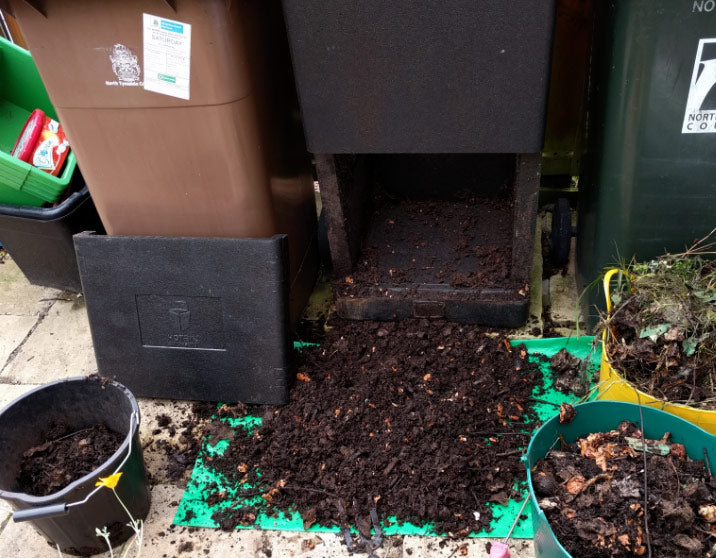Review: Recycling Waste in a Small Household
"Having a small garden pushed us towards the HOTBIN and happily the performance is definitely much better than subsidised council bins."
Seeking an urban composting solution for their small new-build house, Ben and his wife wanted to support their drive for a healthy lifestyle by recycling their waste and composting more at home.
Keen vegetable and herb growers, their urban garden also includes a mix of shrubs, herbs, wildflowers, bulbs, clematis, hedges and a small lawn.
Composting in a Small Urban Garden
After discounting composting systems which required a lot of space, the couple settled on the HOTBIN composting system which was more sympathetic to their small urban garden requirements in terms of both space and function with the sealed design reducing the risk of attracting vermin.
What Have We Composted
All green waste had previously been placed in council collections and food waste sadly went to landfill however after purchasing the HOTBIN in August 2016 the couple started recycling vegetable and fruit peelings, teabags, eggshells, grass, hedge clippings, weeds and even end of season courgette and tomato plants. Occasionally they would ask their neighbours for grass cuttings which would send the HOTBIN temperature soaring up to 65C with steam piping out of the top vent.
“To help things to run more smoothly we purchased a small 5l caddy to get into the habit of placing peelings, egg shells, and teabags to one side and used a bag on the back of the kitchen door to collect toilet roll tubes, egg boxes, and torn up paper including our old copies of Private Eye. We’ve found that adding a bed of torn up egg-boxes and toilet roll tubes to the green caddy before use stops the vegetable peelings from sticking to the sides and also soaks up some of the excess moisture.”
Less Waste, Lower Temperatures
As a two person household no cooked food waste is added so the amount of waste going into the HOTBIN is on the lower end of the spectrum reflecting the average composting temperatures of between 20C to 40C. These lower temperatures mean tea bags and eggs take longer to breakdown, compost harvest times are longer and a few rogue tomato shoots have been found in the compost because the HOTBIN temperature wasn’t high enough to kill the off the seeds.
Our Composting Experience
“We are generally very happy with the resultant compost and get a sizable batch every six months. The worms in the lower, cooler layers also make great work of the matter, and occasionally I’ll scoop up some worms that are trying to escape out of the top and pop them on the garden.
The compost has had positive effects when used on the garden with the hedges and clematis all doing really well and the compost has also improved the organic material in what was very inert new-build-estate soil.”
The couple experienced a few issues using the HOTBIN, the first to make sure enough paper is added into the mix which prevents too much leachate leaking from the bin and also to prevent foul smells. The second surrounded harvesting the compost which they found a little tricky without the top layers falling down, this was solved by choosing to empty the whole HOTBIN and sort by hand then refilling the HOTBIN afterwards. For anyone else experiencing this issue we would recommend reading our tips on removing compost.
“The amount of waste sent to the landfill bin has decreased significantly and we’re now also consciously trying to reduce our non-recyclable packaging waste as this has become more noticeable in the absence of food waste.
I will and have recommended the HOTBIN. The only significant downside is the price-tag, especially when compared to the council-subsidised bins however having a small garden pushed us to the HOTBIN and happily the performance is definitely much better."




